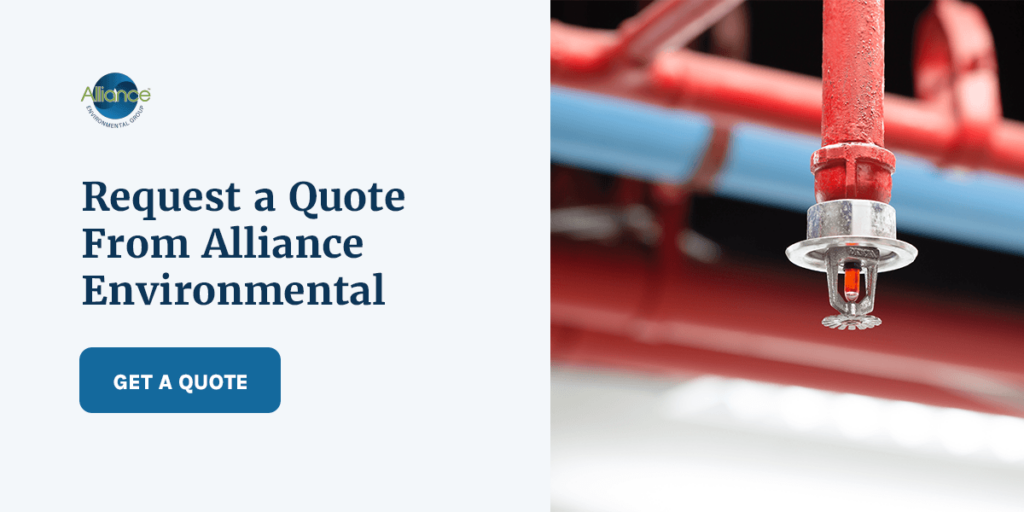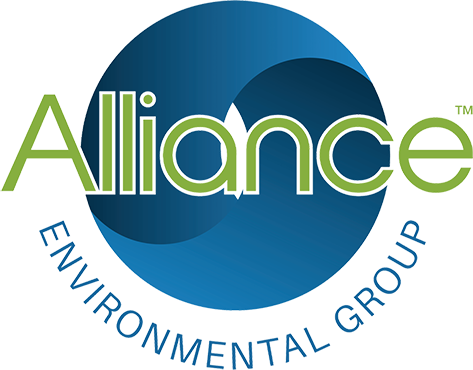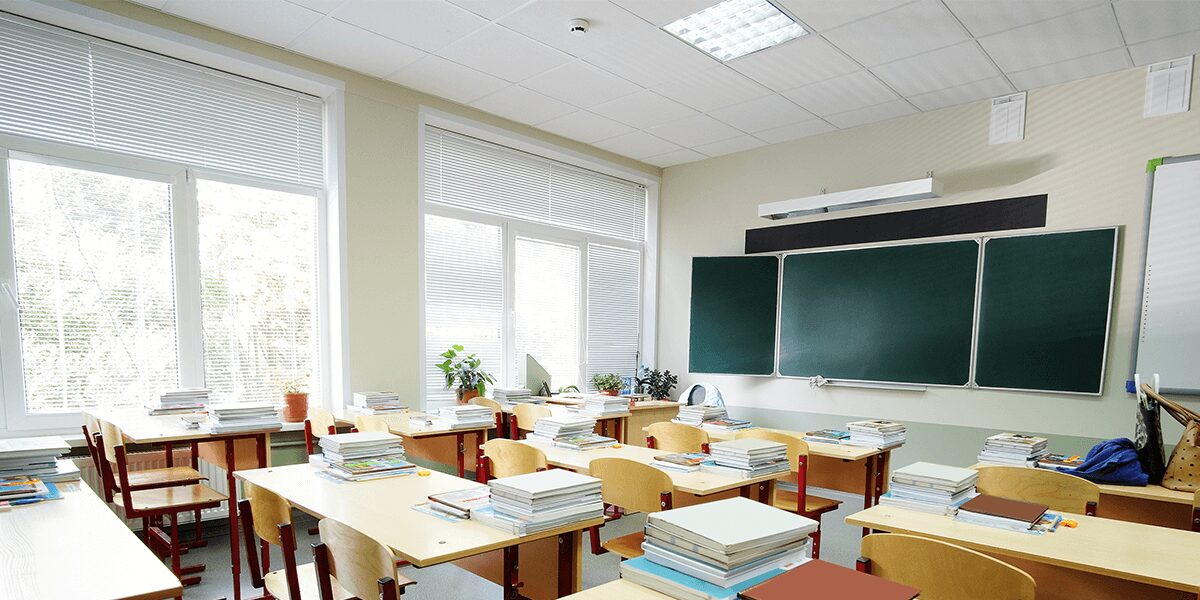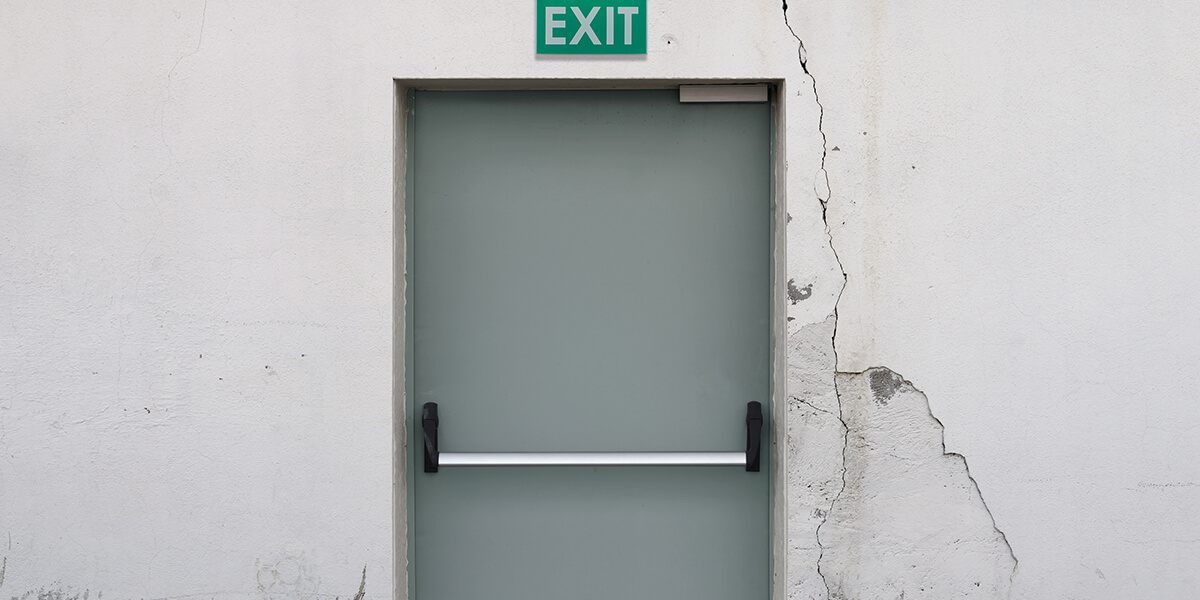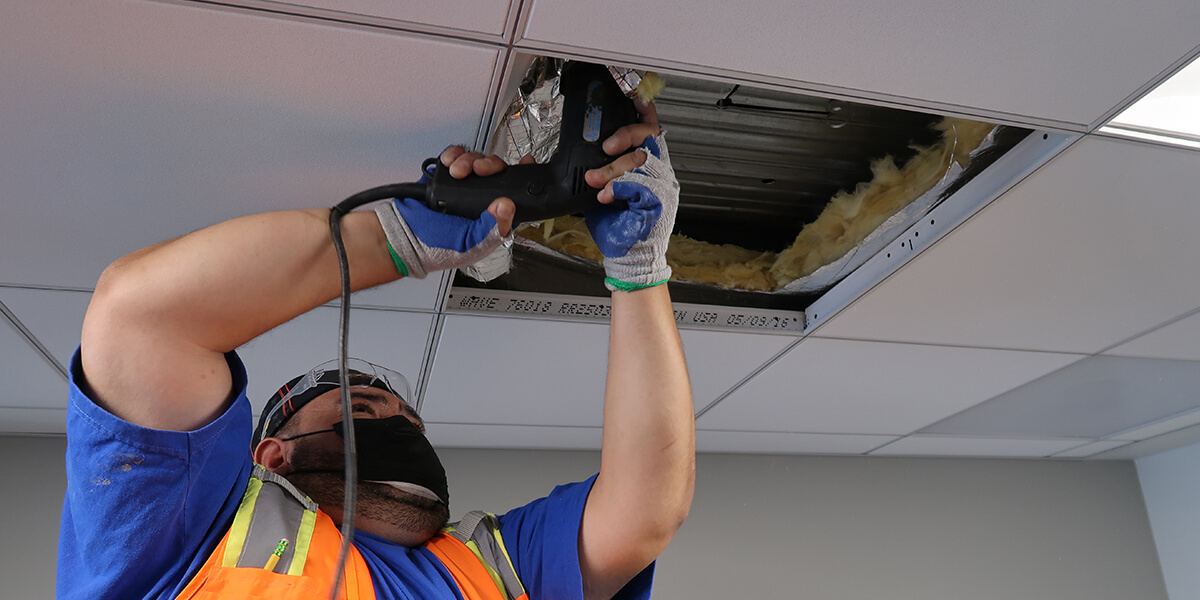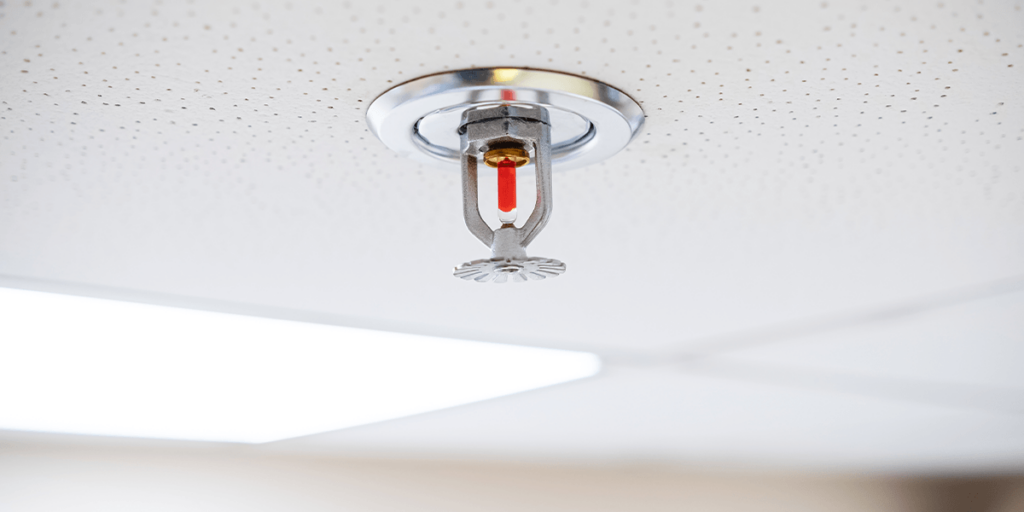
A fire sprinkler system is an important component of fire safety. The units respond to high heat, automatically spraying the nearby area and mitigating fires. Buildings of all industries use sprinklers in their fire protection setups, from hospitals to school facilities.
You can maintain proper sprinkler performance by contracting professionally trained technicians to perform regular cleaning and maintenance. Learn more about the importance of sprinkler cleaning and the best approaches.
Why Is It Important to Clean Fire Sprinklers?
Fire sprinklers are an essential component of fire safety systems. By getting them professionally cleaned consistently, you can keep them functioning at their best. These are other crucial reasons to clean sprinklers:
- Increased fire safety: Sprinklers are essential for fire safety. They’re held in place by a trigger mechanism that goes off when the unit reaches a specific temperature. When it detects high temperatures, small streams of water are released and mitigate fire hazards. Grime or dirt accumulation can prevent the sprinklers from performing effectively — dirt can disrupt the trigger mechanism and keep it from switching on. Grime can also distort water’s movements. Regular cleaning keeps away grime buildup and improves the room’s fire safety.
- Improved physical safety: Consistent cleaning improves the physical health of the room’s inhabitants. Layers of dirt and dust can contain dust mites or bacteria. The buildup can collect and re-transmit viruses, posing a hazard to everyone in the room. These conditions are especially harmful to those in sensitive environments, such as patients in a hospital.
A regular cleaning and inspection schedule helps users to keep sprinklers functioning properly.

How to Clean Fire Sprinklers
Cleaning fire sprinklers requires a careful approach. Sprinklers have a delicate composition, and an incorrect technique could cause the unit to burst and release gallons of water into the room. The National Fire Protection Association (NFPA) outlines standards for cleaning fire sprinklers to ensure safety. The standards advise users to limit direct contact with the sprinkler while cleaning to minimize these risks.
These are three NFPA-approved methods for cleaning fire sprinkler heads:
1. Replace the Sprinkler Heads
If the sprinkler head has severe grime buildup that impedes its performance, you can replace the unit instead of cleaning it. Replacements ensure the sprinkler is fully functional. These are signs that a replacement could suit you best:
- The water streams are distorted.
- The water streams are weak or ineffective.
- The sprinkler leaks in between uses.
- The head or pipe shows obvious signs of damage.
These indications are significant signs of damage, which might make cleaning ineffective. While cleaning removes grime, the sprinkler might continue to perform poorly due to long-term damage.
You can replace sprinkler heads according to the manufacturer and safety instructions. It’s best to contact a professional to install sprinklers to maintain optimal safety. Basic steps include:
- Turn off the water source: Before attempting a replacement, switch off the water source leading to the system. If the water accidentally turns on, it could result in significant injury or damage.
- Drain the system: It’s also usually necessary to drain the system of existing water before removing it.
- Remove and replace the sprinkler: You can use the sprinkler’s identification number to find the replacement type you need. Make sure the replacement unit has the same dimensions as the current one. Remove the existing sprinkler unit and insert the new one according to the manufacturer’s instructions.
- Test the new unit: Lastly, you can turn the water source back on and test the new sprinkler’s responses.
2. Vacuum the Sprinkler Heads
If the sprinklers display grime or dirt accumulation but they still perform well, you can clean them with other methods. Vacuuming is an approach approved by the NFPA because users can limit direct contact with the sprinkler. Vacuums can absorb dust, grime and cobwebs from the sprinkler, leaving the surface significantly cleaner than before. However, you shouldn’t let the vacuum touch the sprinkler — contact could damage the sprinkler or create other hazards.
It’s best to work with professional cleaners to vacuum the sprinkler system. A professional cleaning team has extensive training in sprinkler handling and can clear the sprinklers without damage or injury.
Typically, the vacuuming process involves these components:
- Step ladders: Cleaners use step ladders to reach sprinkler heads, which are typically attached to the ceiling. It’s important to follow all safety instructions when using the ladders to avoid injury.
- Vacuum extensions: Various vacuum extensions let you collect dirt and dust without touching the sprinkler head. Cleaning professionals might use a standard vacuum and a specialized attachment to clean the unit most effectively.
Professionals step on the ladder and adjust it to the necessary height. Then, they turn on the vacuum and hold it near the sprinkler head, allowing it to take in dust and dirt. You can repeat the process until the visible dirt is gone.
3. Use Cans of Compressed Air
Compressed air cans are another example of a fire sprinkler cleaning tool. Compressed air is used to clean many products, from electronic devices to specialized machinery. The controlled air pushes the dirt off the surface, leaving a cleaner exterior. Users should follow specific safety guidelines when using compressed air cans.
The Occupational Safety and Health Administration (OSHA) has specific standards for compressed air use within the workplace, such as only using specific pressures. Contact a cleaning professional to safely apply the air in a controlled manner.
Request a Quote From Alliance Environmental
Fire sprinklers are an integral component of fire safety systems. By replacing or cleaning them, you maintain optimal safety for your facilities.
If you want to improve your building’s fire safety, choose Alliance Environmental today. We offer comprehensive fire safety services that provide complete building protection. All of our offerings align with NFPA standards, helping your facilities reach top safety levels.
Our trained team can clean and inspect your fire sprinklers, ensuring they’re in the best condition possible. We use controlled and thorough cleaning methods to remove grime without damaging the component. If we think a replacement is necessary, we can find the right unit to replace the existing option. With our help, you can increase your building security in case of fire emergencies.
To learn more about our sprinkler cleaning services and other options, request a quote from Alliance Environmental today.
